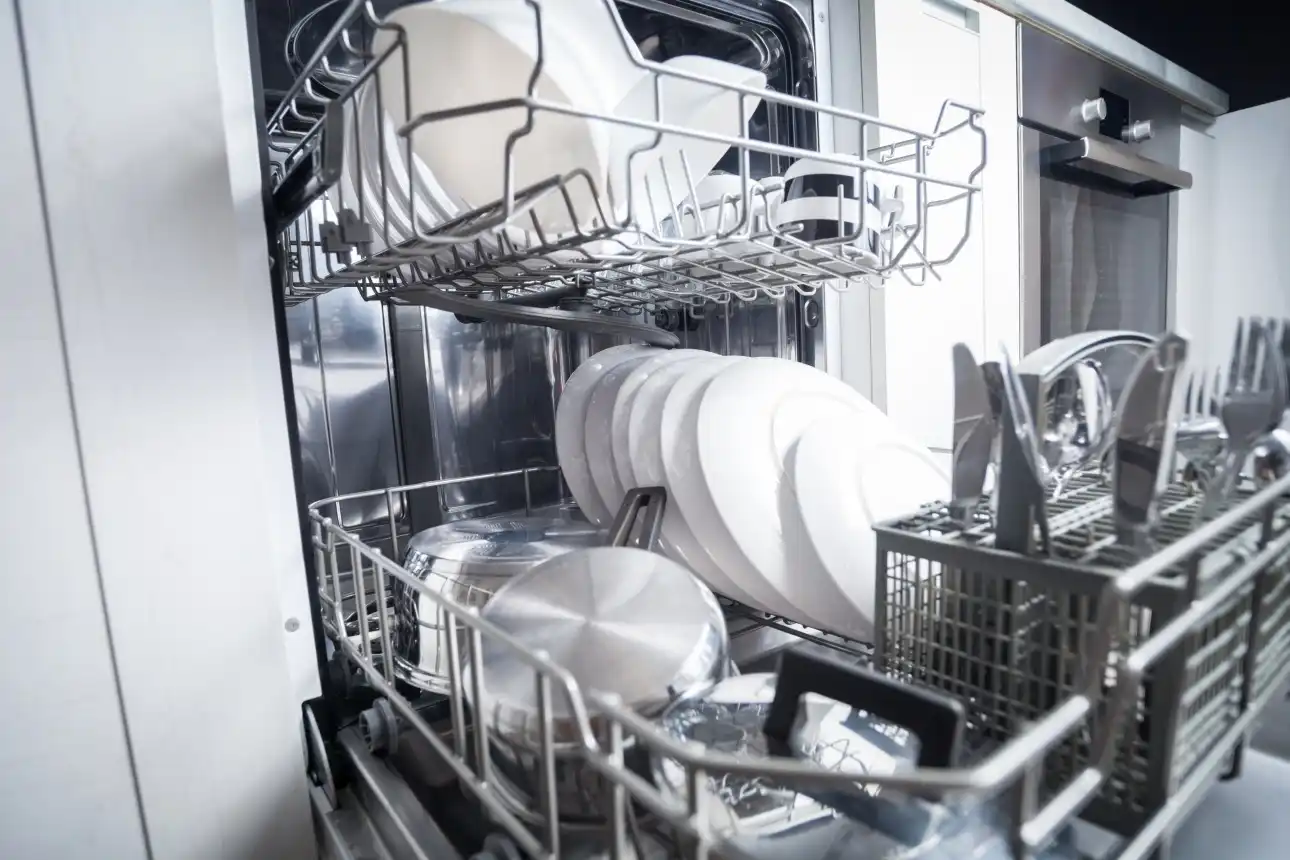Din opvaskemaskine er en praktisk hjælper i køkkenet, der sparer dig for timevis med møjsommelig håndvask. Men hvor rart det end er at skylle opvask og smide dem i opvaskemaskinen, så er denne køkkenmaskine ikke udstyret til at rengøre alle typer genstande.

Varmeelementet i moderne opvaskemaskiner er placeret i bunden. Den høje varme og det høje tryk, der produceres nær den nederste kurv, kan revne og smelte visse typer køkkengrej. Selvom du altid bør tjekke opvaskemaskinesymbolerne, skal du undgå at placere følgende genstande på den nederste hylde.
Plastbeholdere
Plastbeholdere er ofte konstrueret af meget tynd plast. Når den placeres på opvaskemaskinens nederste kurv, vil den høje varme smelte beholderne, efterlade dem ubrugelige og skabe et potentielt rod. Tjek bunden af dine plastikbeholdere for at sikre, at de er sikre til opvaskemaskinen. Hvis det er tilfældet, skal du kun placere dem på den øverste rille, hvor de ikke er udsat for høje niveauer af varme.
Isolerede vandflasker
Insulated water bottles like the Stanley and Hydrojug are better off hand-washed. However, if you must clean them in the dishwasher, place them on the top rack. These water bottles have an insulated airspace in their walls. High heat from the dishwasher can corrupt the insulated airspace and even lead to slight warping, making your water bottle no longer airtight.
Kopper og krus af glas eller porcelæn
Kaffekrus, vinglas og andre glas- eller porcelænkrus og -kopper er kun sikre i top-rack. Placeret på bunden kan højtrykket skabe små revner, splinter og utætte drikkevarer.
Fine China or Crystal
Fine China and crystal are delicate. It’s best to hand wash these items (especially if they’re sentimental or expensive pieces). If you don’t want to hand wash them, place them on your dishwasher’s top shelf and avoid using the heat drying setting.
Wooden Cutting Boards
Wooden cutting boards and utensils are porous, meaning they absorb moisture and can warp. High heat also causes them to expand and contract, leading to cracks and brittleness. Hand wash your wooden utensils and cutting boards. If you don’t want to hand wash them, place them on the top rack and avoid the heat dry setting.
Lightweight Plastic Bowls and Plates
Any lightweight or thin plastic dishware has an increased chance of melting on the bottom rack compared to other types. The plastic may also release harmful chemicals when exposed to extreme temperatures. Hand wash or top rack wash your thinner plastic bowls and plates.
Non-Stick Cookware
Unfortunately, when repeatedly exposed to high heat and pressure, non-stick cookware can lose its protective coating. While it’s fine to occasionally place these items on the bottom rack (granted, they’re marked dishwasher safe), you’re better off washing them on the top rack or hand washing them if you want your non-stick pots and pans to last for years.
Baby Bottles
Not all baby bottles are dishwasher-safe. Those that are dishwasher safe should go on the top rack. Like other types of plastic, baby bottles can melt or warp when too close to the dishwasher’s heating element. Consider investing in utensil baskets or bags that can sit on the top rack to hold your baby bottle nipples and rings while they’re being cleaned.
What To Keep Out of the Dishwasher Altogether
I use my dishwasher daily. It’s a fantastic tool for keeping the kitchen clean and making life easier. But not everything is dishwasher safe. Cast iron, sharp knives, aluminum pans, and jars will need to be hand-washed to preserve their longevity.
Hvis du synes godt om vores side, så del gerne med dine venner & Facebook